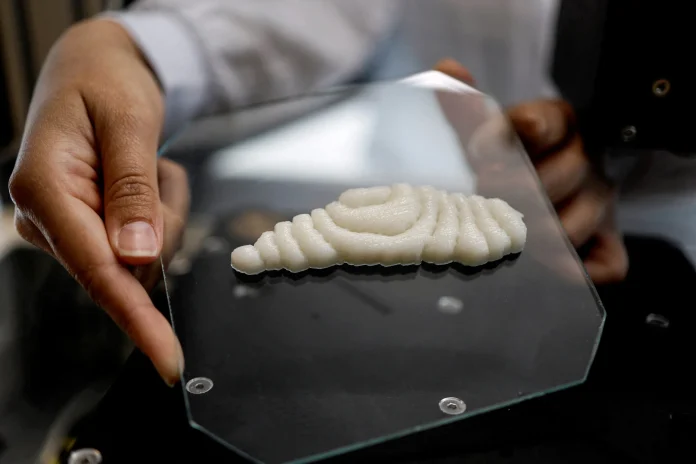A company in the food technology industry claims to have created the world’s first 3D printed fish fillet that is ready to be cooked, using animal cells grown and cultivated in a laboratory.
While lab-grown beef and chicken have been explored as alternatives to traditional farming methods to address concerns about animal welfare and the environmental impact of farming, very few companies have ventured into creating lab-grown seafood.
In a partnership with Singapore-based Umami Meats, Steakholder Foods has developed a process where cells are extracted from groupers and cultivated into muscle and fat, which are then added to a “bio-ink” suitable for 3D printers. The end result is a narrow fillet that simulates the texture and properties of fish caught in the sea.
Umami Meats plans to launch its first products in Singapore next year, and hopes to expand to other countries such as the United States and Japan pending regulatory approval. However, the cost of cell cultivation is still too high to be competitive with traditional seafood, so for now, plant-based ingredients are being added to the bio-ink to dilute the fish cells.
“As time goes by, the complexity and level of these products will be higher, and the prices linked to producing them will decrease,” said Arik Kaufman, the chief executive of Steakholder Foods.
The 3D printer moves the glass dish back and forth as the white finger-length fillet gradually takes shape. Once cooked and seasoned, the fillet has the flakiness of conventional fish, making it difficult to distinguish between the two. While the process is less complex than lab-grown beef, there are still some drawbacks.
Cow stem cells have been studied extensively but much less is known about fish, said Umami’s chief executive, Mihir Pershad.
“We have to figure out what the cells like to eat, how they like to grow, and there’s just not so much literature to start from,” he said.
“The number of scientists, you can imagine, working on fish stem cell biology is a small fraction of those working on animal cells and human cells.”
They have figured out a process for grouper and eel and hope to add three other endangered species in the coming months, he said.
Meeting the price of fish from the sea is a key challenge.
“We want consumers to choose based on how it tastes and what it can do for the world and the planetary environment. And we want to take cost off the table as consideration,” Pershad added.


